Sights on the island of Rhodes
The island of Rhodes boasts a long and colourful past, which has had a significant impact on the appearance of its historical monuments. The biggest attraction of the whole island is undoubtedly the capital city of Rhodes, a unique place with beautiful monuments from different historical eras. The ancient town of Lindos, a UNESCO World Heritage Site, is clearly one of the most important sights on Rhodes similarly as the many remains of medieval castles from the time of the Knights of St. John.
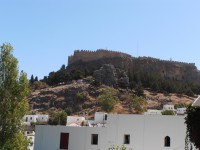
Acropolis of Lindos
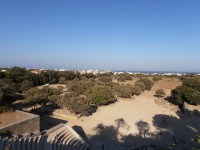
Acropolis of Rhodes
Archaeological site of Filerimos
Convent of Our Lady of Filerimos
Archaeological site of Kamiros
The ancient city of Kamiros
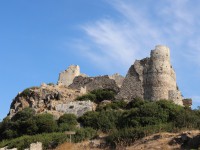
Castle of Asklipio
Ruins of Asklipio Castle (Asklepieion)

Colossus of Rhodes
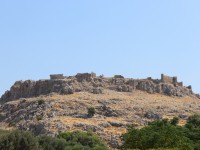
Feraklos Castle
Ruins of Feraklos Castle
Church of Archangel Michael
Church of St. Michael (Archangelos)
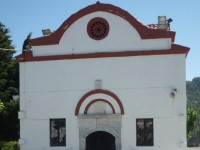
Kalopetras Monastery
Moni Kalopetras, Mon├ş Panag├şas Kalopetras
Kritinia Castle
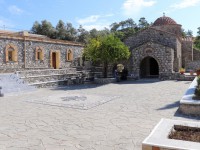
Moni Thari Monastery
Archangel Michael Monastery (Laerma)
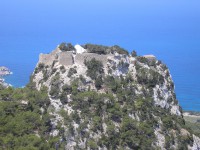
Monolithos Castle
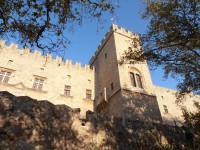
Palace of the Grand Masters
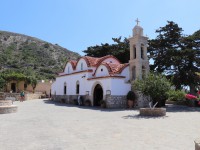
Skiadenis Monastery
Monastery of the Virgin Skiadenis, Panagia Skiadeni
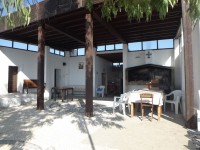
Tsambika Monastery
Moni Tsambika, Panagia Tsambika, Kato Tsambika
Historic town of Rhodes
The city of Rhodes was founded in 408 BC as the capital city of the eponymous island of Rhodes and remained so to this day. Rhodes is a beautiful historical city with an incredible amount of monuments from different historical eras. You can see preserved monuments from the ancient period as well as massive medieval buildings and architectural elements reminiscing of the rule of the Turks. A large number of the preserved buildings are mainly from the medieval period and the reign of the Knights of the Order of St. John, for which reason the term "Knight city of Rhodes" is sometimes used.
Nowadays, the town is divided into two main parts - "Old Town of Rhodes " and "New Town of Rhodes ". The Old Town of Rhodes is a UNESCO World Heritage Site and it is in this part of the city where the most famous historical monuments are located. New Town of Rhodes, on the other hand, represents the modern and touristy part of the city with its shops, restaurants, bars and entertainment venues.
Ancient sights: The Acropolis of Rhodes, the main archaeological site of the ancient buildings of Rhodes, is situated on the hill of Monte Smith (or Agios Stefanos), which towers over the capital city. The remains of the magnificent ancient temple of Apollo, the amphitheatre and the ancient stadium can be seen here. A monument from the times of ancient Greece can also be found in the Old Town of Rhodes, on Symi Square, where the remains of the ancient Temple of Aphrodite from the 3rd century BC are standing.
Medieval Johanniter buildings. The city of Rhodes is still surrounded by massive double walls, which can also today protect symbolically the treasury in the city, namely the historical centre - The Old Town of Rhodes. One of the most important monuments of Rhodes is the Palace of the Grand Masters, the residence of the Supreme Knight of the Johanniter Order, built in the early 14th century. Due to a gunpowder explosion, the palace underwent a major reconstruction, which was completed in 1940 by Italian architects. Visitors to the city can also stroll along the reconstructed Street of the Knights (Odos Ippoton), which boasts with Gothic buildings with magnificent gardens from the 14th to 16th centuries.
The old harbour of Mandraki, associated with the legend of the mythical Colossus of Rhodes, which is ranked among the seven wonders of the ancient world, is also a popular stop for tourists. Today, the harbour is decorated with two bronze statues of a deer and a hind. On the harbour pier, the fortress of Agios Nikolaos (St. Nicholas), functioning as a lighthouse, and three old windmills are standing.
The ancient town of Lindos with the Acropolis
Another important stop on the way to see the sights of Rhodes is the beautiful "white town" of Lindos, which impresses from afar by its Acropolis with the temple of the goddess Athena. The historical site of Lindos is a UNESCO World Heritage Site.
First, you walk through the narrow streets of the original fishing village of Lindos, then you cross the massive Johanniter walls to see the Acropolis of Lindos in all its glory. The remains of the temple of Athena of Lindos still fascinate, especially the 20 metre wide stairs leading up to the temple and the preserved colonnaded hall of around 20 Doric columns.
The ancient city of Kamiros
The most powerful ancient cities of Rhodes - Kamiros, Lindos and Ialysos, reached their heyday in the 6th to 5th century BC and formed together the powerful city-state of Rhodes. Unfortunately, Kamiros was badly affected by two strong earthquakes, when the second one in 142 BC caused the depopulation of the city.
The archaeological site of Kamiros is located off the northwest coast of the island and its importance is all the greater because the remains of the city have been preserved in a very good state. The foundations of not only elaborate private dwellings, but also large public buildings, an agora and an acropolis with a sanctuary have been found and uncovered.
Medieval Johanniter castles
The medieval period and the reign of the Knights of St. John belong mainly to fortification and modernization, as evidenced by the aforementioned monuments such as the Palace of the Grand Masters or the massive walls around the cities of Rhodes and Lindos. There is also a large number of castles dated back to the time of the Knights of St. John, the remains of which are scattered all over the island and are thus a popular destination for short and often walking tours.
Among the most famous belong the Monolithos Castle, located near the village of the same name and perched high on top of a rocky hill with a magnificent view of the coast and the nearby island of Chalki, or Kastellos Kritinia Castle, which is rated as the best preserved Johanniter castle on Rhodes and has Johanniter coats of arms on its exterior walls.
The medieval castle of Asklipio was once protected by massive defensive walls and two watchtowers. The remains of this Johanniter fortification are still accessible for visitors today, namely, along a narrow winding path behind the village of Asklipio. Above the village of Haraki, there are ruins of another interesting Johanniter castle, Feraklos.
Monasteries and churches
The inhabitants of Rhodes, like all Greeks, are very strongly religious and traditional. Traditions and festivals play an important role in their lives and culture, with the vast majority of Greeks adhering to the Greek Orthodox Church (reportedly up to 98% of all believers).
In almost every village, there is a local church as well as several chapels that you will come across on your walks. One of the most famous churches and monasteries in Rhodes is the Monastery of Virgin Mary of Filerimos, which is a part of the entire archaeological site of Filerimos, uncovered near the town of Ialysos. The archaeological site hides several beautiful monuments from different historical periods.
In the central part of the inland of Rhodes, amidst pine forests and wild nature, we can find the magnificent Moni Thari (Archangel Michael) Monastery, one of the most important religious buildings on the island which is still inhabited by monks. Monks also protect the silver icon of Holy Madonna, which is hidden in the magnificent monastery of the Madonna of Skiadeni. The monastery of Skiadenis is located on a high mountain in the southwestern part of the island.
The Moni Tsambika Monastery (or Panagia Tsambika) rises on the mountain of the same name off the east coast of Rhodes, above one of the most beautiful beaches of Rhodes, Tsambika Beach. The Moni Tsambika Monastery is connected to two mysterious stories about the found icon of the Virgin Mary. Within sight of the monastery, there is another monastery with a similar name, the Kato Tsambika Monastery, which is described as the "lower" monastery because it was built down by the main road. The lower monastery of Kato Tsambika is more splendid and also permanently guarded, as the famous icon of Virgin Mary, originally found up on a rock, is kept here for most of the year.
The tall, white church of Archangel Michael with its magnificent bell tower is the symbol of the entire historical town of Archangelos. St.Michael is the patron of Archangelos and also other church buildings on the island of Rhodes are dedicated to his legacy.
The small monastery of Moni Kalopetras is standing in the northern part of the island of Rhodes, near the famous Valley of the Butterflies.
When is the best time to visit the sights of Rhodes?
The main tourist season on Rhodes falls on the summer, especially on the months of June to September. This is when there are the most tourists and also the highest air and sea temperatures. Ideal for a classic summer holiday. However, if you are primarily heading for the sights of Rhodes and for beautiful pictures without the crowds of tourists, then we would recommend aiming your visit of the island at the edges of the season, that means from May to June and then more so from the second half of September onwards. The tourists will be already much fewer. However, you should also pay attention to the fact that outside the main summer season, the opening times of the monuments are limited to specific days of the week and some are even closed completely, so you can only visit and take pictures of them from the outside.
Map of Rhodes - Sights
The most important and most visited sights of Rhodes are clearly marked on the Rhodes Island map.
In fact, if you want to spend your holiday exploring the sights of Rhodes, you will certainly not be bored. During your wanderings, you may come across other beautiful places, that are not even mentioned in the guidebooks. It is simply impossible to write everything down. For more tips on excursions, see Rhodes - Trips.
